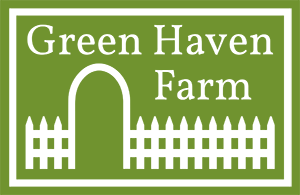A Pollinator Friendly Corner
By Cathrine StClair
I love looking at garden plans for ideas and inspiration. But I’m also a firm believer that plans are meant to be broken (is that a thing? You know what I mean). My hope is you can take the garden plans we share here - change and tweak them to suit your needs and preferences.
Our first plan offering is a pollinator friendly corner garden for the Mid-Atlantic area.
This garden is planned to have something of interest in spring, summer and fall. It is a mix of native plants and some non-natives that have had very high pollinator activity in our gardens. All of the native plants (or cultivars of natives) are marked with an asterisk.
The plants here will do best in full sun, but can tolerate a little bit of light shade (aim for 6 hours of sun). A well drained, medium moisture soil is preferred but this planting will tolerate some drought once established.
So what is in the plan?
A is Aster tataricus 'Jin-Dai' – 1
Known as Tatarian Aster, it grows 36” wide, 48” tall and blooms in October and even into November. While not a native plant, it provides pollen and nectar late into the season, even after many native Asters finish blooming. It is deer and rabbit resistant. You can learn more about it in this blog post.
B is Solidago rugosa ‘Fireworks’* – 3
Known as Rough Goldenrod, this variety grows about 24” wide and 48” tall. It blooms in September and sometimes all the way into November. Goldenrod is a very important plant family for our native pollinators. You can learn more about this plant in this blog post.
C is Phlox paniculata ‘David’* – 3
This is a disease resistant, white variety of our native garden phlox growing 24” wide and 36” tall. It blooms in July and will re-bloom into September with deadheading.
D is Allium ‘Purple Sensation’ – 6
Known as ornamental onion, these can be planted as bulbs in the fall, or from potted plants in spring. They are about 8” wide and the purple puff ball flowers hover about 24” above the foliage in May. While not native, they are loved by bees. Their foliage fades as the plants flower, but the empty space will be filled by surrounding plants.
E is Penstemon digitalis ‘Mystica’* - 5
This cultivar of our native penstemon grows 12” wide and 24” tall. It blooms in June with clusters of pinkish-white flowers, but grow if for the foliage as much as the flowers. The leaves are purple in spring, greening some during the summer but becoming more vibrant in late summer and fall.
F is Zizia aurea* – 4
Commonly known as Golden Alexanders, this native plant blooms in April, providing nectar and pollen for pollinators early in the year. It is also a food source for Swallowtail butterfly caterpillars. It grows 12” wide, 24” tall including flowers. You can learn more about this plant in this post.
G is Asclepias tuberosa* – 3
Commonly known as Butterfly Flower, this native perennial grows 24” wide and 24” tall. Its bright orange blooms appear through June and July. This plant is a food source for Monarch butterfly caterpillars.
H is Coreopsis verticillata ‘Moonbeam’* – 3
This cultivar of our native threadleaf Coreopsis grows 18” wide and 18” tall. It has lovely clear, yellow flowers and can bloom from June through August.
I is Salvia nemorosa ‘Salvadore Blue’ – 5
Commonly known as Meadow Sage, this dwarf variety grows just 12” wide and 12” tall. While not native, the beautiful blue-purple bloom stalks are loved by bees and smaller butterflies. This Salvia blooms in May through June and will re-bloom in September if deadheaded. It is deer and rabbit resistant.
Hopefully this plan can give you some ideas for your own garden. If you would like to print out a copy of the plan and plant list, you can download a PDF of the plan.











